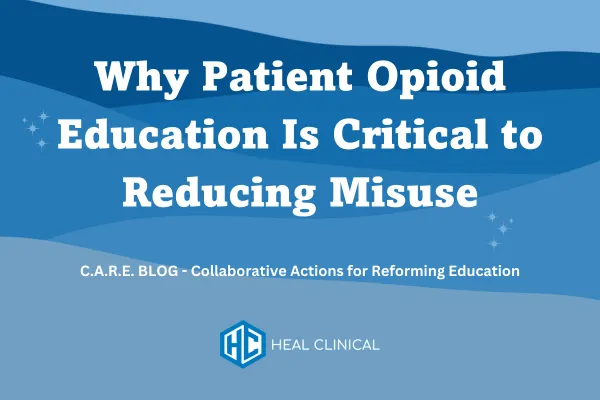
Why Patient Opioid Education Is Critical to Reducing Misuse
Why Patient Opioid Education Is Critical to Reducing Misuse
The Ongoing Opioid Crisis in the U.S.
The opioid epidemic continues to claim lives, with over 80,000 opioid-related deaths reported in 2022 (CDC, 2023). A key contributor to this crisis is a lack of patient understanding around safe opioid use, medication adherence, and overdose prevention.
✔ Misuse driven by poor education and unclear communication
✔ Limited provider time for consistent opioid counseling
✔ Missed opportunities for prevention at the point of care
Why Patient Education Reduces Opioid Misuse
Patient education is a proven strategy for improving safety. A 2020 study in The Journal of Pain found that opioid misuse drops by 25% when patients receive effective education.
✅ Educated patients follow prescription guidelines more closely
✅ They recognize signs of overdose and know how to respond
✅ They store and dispose of medications more responsibly
Despite the evidence, many practices lack the time or systems to deliver this education consistently.
How Heal Clinical Delivers Effective Opioid Education
Heal Clinical provides tablet-based patient education programs that equip patients with essential knowledge—before they enter the exam room. These tools reduce misuse risk and lighten the provider’s burden.
Key Features of Heal Clinical’s Opioid Education Tools:
📌 Covers opioid risks – Includes addiction, dependency, and overdose education
📌 Teaches naloxone use – Instructs patients on overdose reversal
📌 Guides safe storage and disposal – Prevents unauthorized access and misuse
📌 Improves patient readiness – Supports better adherence and shared decision-making
A Smarter Approach to Reducing Opioid Misuse
By automating patient education, Heal Clinical ensures every patient receives consistent, accurate information. Providers benefit from more efficient visits, better-informed patients, and reduced misuse risks.
💡 Looking to reduce opioid misuse in your practice? Heal Clinical’s education tools help patients use medications safely—supporting compliance, safety, and improved outcomes.
